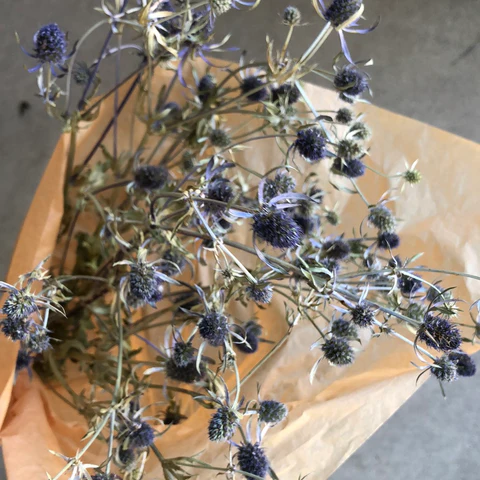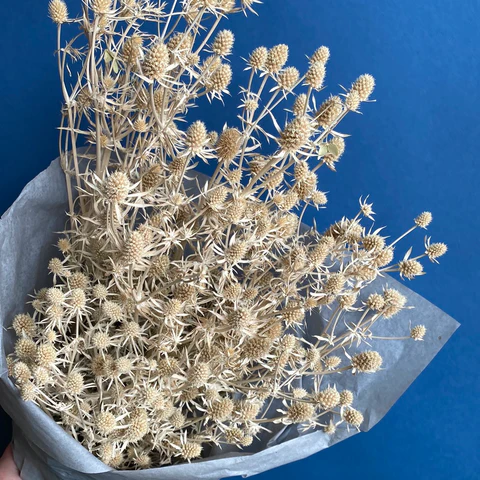Eryngium & Echinops
- CFC Team
- Jul 3
- 2 min read

When you are looking for something a little different, perhaps a little funky or fun, Echinops and Eryngium always fit the bill. The long vase life, color, and texture make these flowers a consistent go-to at the market.
Eryngium & Echinops are often confused with each other. While they have similarities, they are most definitely not the same. They're not even in the same plant family! Eryngium belongs to the Umbelliferae Family, which includes celery, anise, parsley, and other edibles. Echinops belongs to the Asteraceae family or commonly referred to as the daisy family, which includes 32,000 flowering plants.
They have a completely different plant structure; however, both have been referred to as thistles in the flowering world. They can be interchanged, but we've listed them below to help differentiate! Both are wonderful as cut flowers because of their long vase life and ease of drying.
Eryngium (Sea Holly)
Starting in July and continuing into August, Eryngium features a unique, funky texture and is available in a reliable silver/blue color.
Varieties that are grown locally include "Blue Glitter", "White Glitter", and "Big Blue", which is extra large and extra spiky (beware!). The Glitter varieties have smaller heads and lots of side stems. We love the white/green for bringing extra fun texture to a neutral palette.

All varieties of Eryngium dry well, making it a great addition to outdoor designs, installations, or winter designs as well. You can count on Eryngium to last! The flowers will not continue to open after harvest.
Blue, White, & Big Blue Eryngium
Echinops (Globe Thistle)

The globe shape of Echinops makes it particularly unique and fun to use! The blue/green color of echinops is consistent and reliable, too.
Echinops can be visually differentiated from Eryngium because they don't have the spikey collar and because they have a more distinct globe shape. They do continue to open after harvest.
Echinops are available here in July and August.













